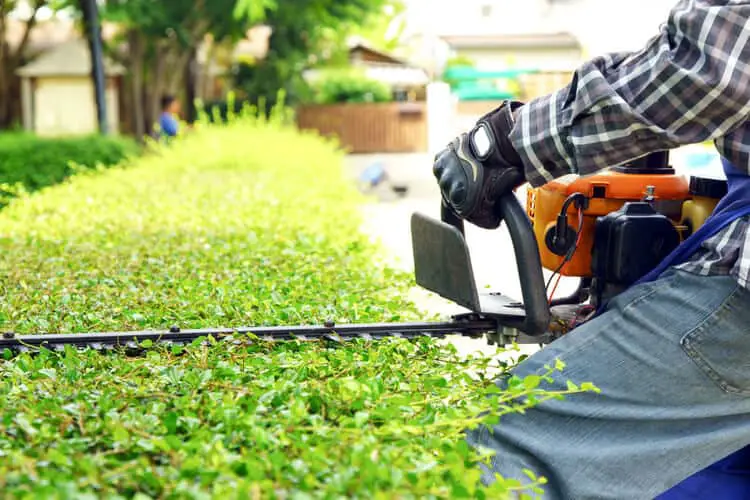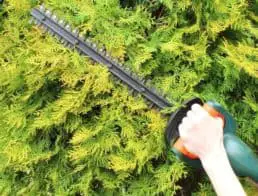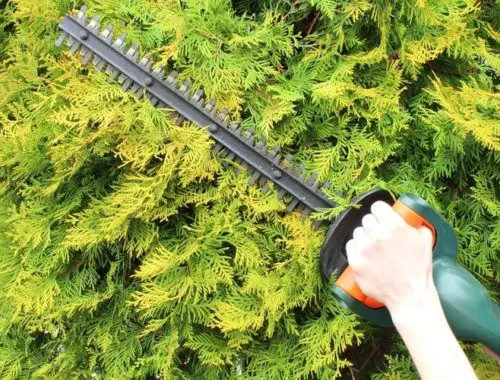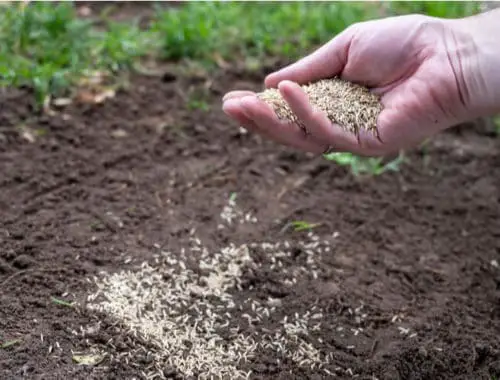Trying to figure out the best time to trim or cut your hedges?
Hedge maintenance is an important part of keeping your hedges healthy and looking their best, but timing is important.
As a general recommendation, you can trim at any time of the year if necessary, such as to clear a walkway or to remove dead or sick limbs. With that said, you should reserve larger-scale pruning for specific times of the year. Trimming at the right time avoids damage to your plants and promotes healthy, attractive growth.
When the right time is, however, depends on the type of hedge. Let’s take a deeper look at the different categories of hedges and when they should be trimmed or cut.
The Best Time to Trim New Hedges

Photo courtesy of Pixabay
New hedges are generally planted in the late winter or spring and will require trimming right after they’re planted.1 New hedges can also be planted in the summer, though. In that case, you might want to wait to trim them until they’re dormant, later in the season.
When trimming new hedges, you’ll want to trim the upright stems down to between about six and eight inches in height and reduce the overall height of the plant by around a third. Then, in the following fall, you’ll want to reduce the new growth by half and make sure that the side growth is trimmed to the width you’d like the hedge to be.
This will make your hedge look pretty scraggly at the start, but don’t worry: when the hedge leaves dormancy in the spring, this severe clip will make the stems more likely to branch as they grow. This increases the fullness of the hedge without adding a lot of bulk, and also makes them easier to maintain. As even more new growth occurs, regularly trim down to the overall dimensions you’d like your hedge to be at, allowing fresh leaves to fill in the empty spaces.
New evergreen hedges and slow-growing deciduous hedges are the exceptions. Do not trim them back until they’re due for their ordinary maintenance trims.
The Best Time to Trim Evergreen Hedges
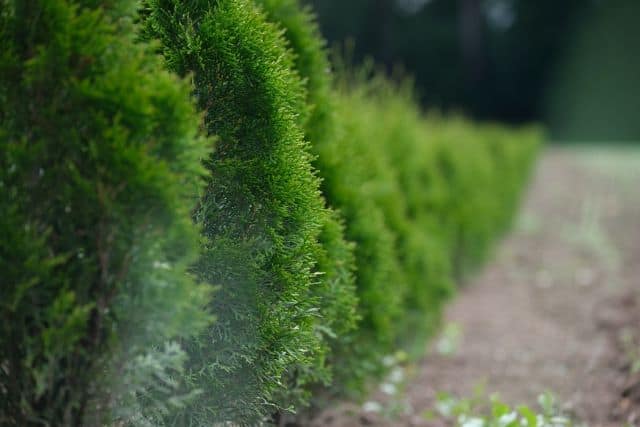
Photo courtesy of Unsplash
Evergreen hedges are very convenient in that you don’t have to worry too much about trimming them at a particular time of the year. Their foliage stays nice, full, and green all year long, which is what makes them so appealing for landscaping. Still, it’s generally best to do major trims on evergreen hedges in the late winter or early spring, right before the hedges leave dormancy.
You’ll also probably want to do some light trims during the summer to help keep the size and growth of your evergreen hedge under control. Exactly how frequently you should do summer trims depends on how you like your hedges to be shaped. For a more natural look, you can get away with less frequent trims, focused on keeping the general size and shape and on removing dead branches. For more formal, neatly shaped hedges, you’ll need to trim them more frequently.
In addition, you’ll want to trim your evergreen hedge while it’s dry, so avoid trimming right after it rains. If you’ve watered the hedge, wait overnight before trimming.
The Best Time to Trim Flowering Hedges
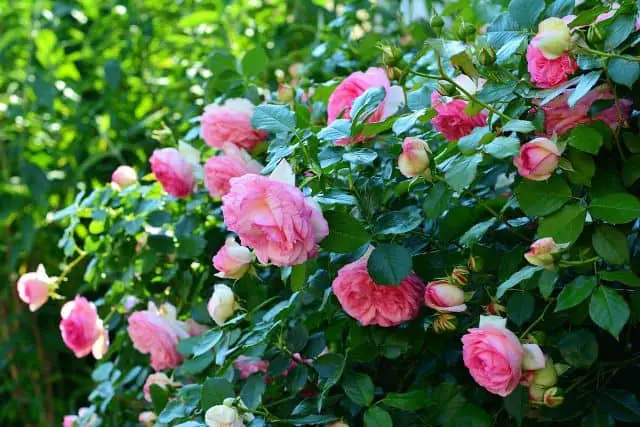
Photo courtesy of Pixabay
Flowering hedges are somewhat the opposite of evergreen hedges in that they require more careful treatment.2 Trimming needs to be correctly timed to ensure that the greenery looks its best and that the hedge is able to produce flowers each year. That timing depends on whether the hedge blooms on old or new wood.
Hedges that bloom on old wood begin to produce buds that will flower next year during the current year. To give the hedge plenty of time and resources to dedicate to next year’s blooms, you should trim the hedge right after this year’s flowers are finished blooming. These shrubs tend to bloom in the spring, so that trim will typically be in the late spring.
New wood bloomers won’t begin to produce blooms until spring of the same year that the blooms will flower. That gives you a lot more wiggle room for when to trim since you don’t have to worry about damaging next year’s blooms for very long. To give new wood bloomers enough time to recover after trimming, trim in late winter or early spring, before the hedge begins to produce buds, or wait until the hedge finishes flowering like you would with an old wood blooming hedge. You’ll still want to avoid trimming in the mid-summer or in winter, as the harsher temperatures can be rough for your recovering shrub.
The Best Time to Trim Deciduous Hedges
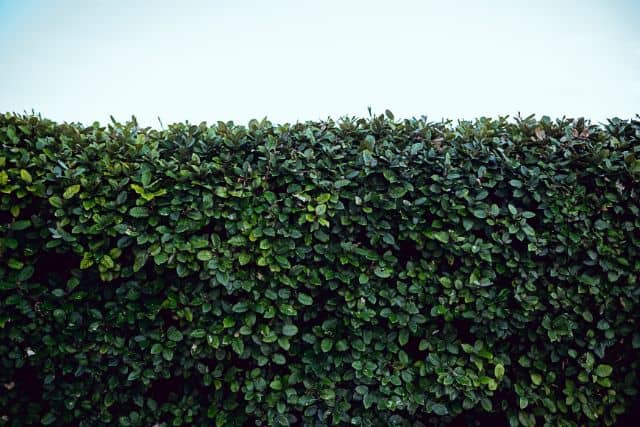
Photo courtesy of Unsplash
Deciduous hedges, like evergreen hedges, tend to be pretty low maintenance. In fact, they may even be lower maintenance, since deciduous hedges are rarely used for the same sort of precisely shaped hedges and topiaries that evergreen hedges are often used for. In terms of annual maintenance, you’ll want to trim in early spring to help prevent overgrowth. During the summer, you can also trim off any overgrowth that does occur, as well as any broken or otherwise damaged branches.
Final Thoughts

Photo courtesy of Pixabay
Informal, natural-looking hedges generally only need to be trimmed once a year, in the late winter or early spring, while the plant is still dormant. For more formal hedges, you can do a secondary trim in the late summer or early fall to keep the shape in top form. However, the optimal frequency varies from plant to plant, even within the categories we’ve discussed.3
Finally, don’t forget the importance of the proper tools for hedge care. Use an electric or gas-powered trimmer to remove larger sections of growth. Pruners are good for larger branches, while shears are ideal for detail work. Remember to keep all your cutting supplies nice and sharp so they can trim without causing damage, and clean your trimming tools between plants to avoid spreading disease or pathogens. You can use a solution of one part bleach to nine parts water.
Knowing how to properly care for your hedges makes all the difference in their health and appearance, and healthy, good-looking hedges make a huge difference in the overall appearance of your lawn or garden. Hopefully, the information we’ve given you here will help you keep your hedges looking their best.
Article Sources
Home Life Daily uses only high-quality sources, including peer-reviewed studies, to support the facts within our articles. Read our editorial process to learn more about how we fact-check and keep our content accurate, reliable, and trustworthy.
- Harrington J. The Best Time to Trim or Cut Hedges. hunker.com. Accessed 9 Oct 2021.
- Olesen T, Menzel C M, McConchie C A, Wiltshire N. Pruning to control tree size, flowering and production of litchi. Scientia Horticulturae. 2016; 156: 93-98. DOI: 10.1016/j.scienta.2013.03.013.
- Feuchy J R. Hedges. Colorado State University Cooperative Extension. 1992; 7 (208). Accessed 9 Oct 2021.
